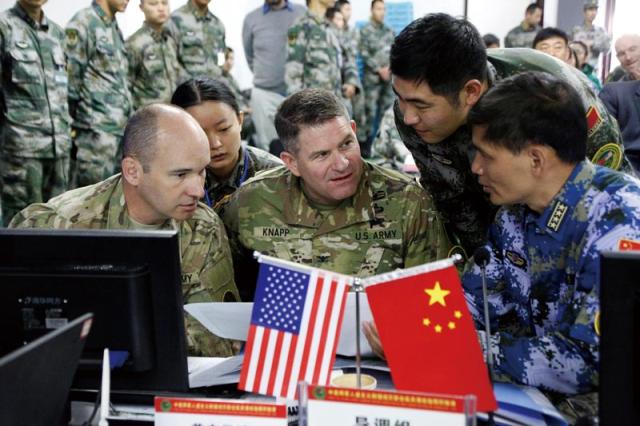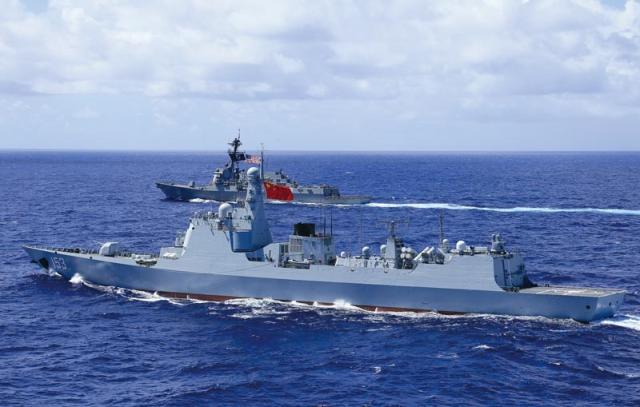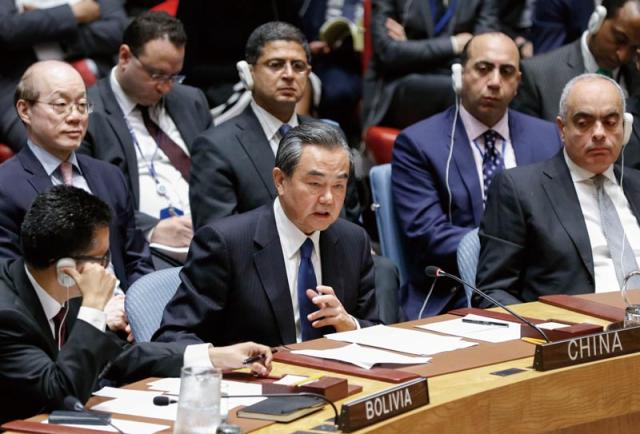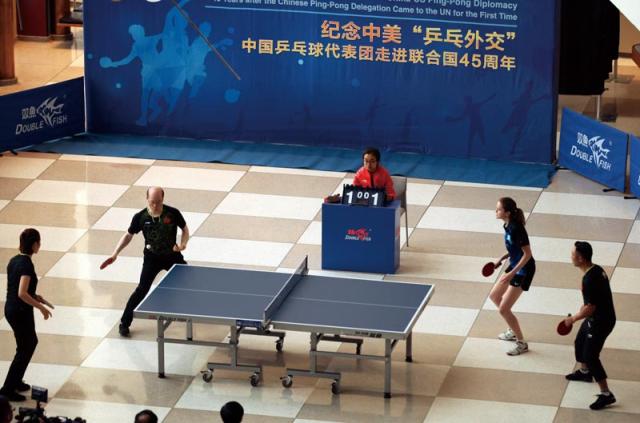Among the five countries included in US President Donald Trump’s high-profile trip to Asia, his visit to China was no doubt the most watched. Given Trump’s previous criticism of China on a variety of issues, ranging from trade and alleged currency manipulation to the North Korean nuclear issue, the high-stakes trip was closely watched for clues about the relationship between the world’s two largest economies, and the balance of world power.
There’s no doubt China took Trump’s visit seriously. China’s Ministry of Foreign Affairs made it clear that China would give him a “state visit-plus” reception. Beyond official talks, Beijing put a great deal of emphasis on nurturing the personal relationship between Trump and Chinese President Xi Jinping.
When Trump arrived on November 8, Xi and his wife Peng Liyuan invited him to a private meeting in the Forbidden City, China’s ancient Imperial Palace (now known as the Palace Museum), closing it to the public for a day.
The two couples also drank tea at the Baoyun Building, or the Hall of Embodied Treasures, which served as an imperial library. Although the Chinese government didn’t reveal much about the dinner, they are also thought to have dined in the Jianfu Palace, which would make Trump the first foreign leader to dine at the Forbidden City, a reception warmer than that received by former President Barack Obama when he visited in 2014.
Rolling out the red carpet appeared to pay off. During the visit, Trump repeatedly complimented China on Twitter, calling his meeting with Xi in the Forbidden City “absolutely terrific” and saying the dinner was “beyond that.”
Besides the apparently amicable private meeting, official talks held on November 9 in the Great Hall of the People, after an official welcome ceremony, also appeared to go off without incident.
Trump toned down his previous criticism of China. He blamed past US administrations for the “huge” bilateral trade deficit, and said China was merely trying to benefit its own citizens.
On North Korea, Trump did not reiterate his repeated criticism of China for failing to control Pyongyang. Instead, he merely urged Xi to “work on it very hard.” Unlike Barack Obama, his predecessor, Trump didn’t mention the South China Sea, nor was there any mention of human rights.
For his part, Xi promised to make the domestic market “more open, more transparent and more orderly” for foreign companies. He also reiterated China’s “firm commitment” to the denuclearization of the Korean Peninsula and the implementation of United Nations (UN) resolutions.
A significant deliverable of Trump’s visit was that the leaders signed trade and investment deals worth US$253.5 billion, something China’s Commerce Minister Zhong Shan called a “miracle” that broke historical trade records.
Trump called his Asia tour a “tremendous success” on November 16, saying it would return US$300 billion to the US – but some Western observers deemed it a diplomatic failure.
The perception stems from a difference in how Beijing and Washington see the bilateral relationship. From China’s perspective, given rising rivalry with the US, its focus on the China-US relationship is to ensure the overall relationship is positive, or in Xi’s words, “on the track of cooperation.” However, in Washington, successful China diplomacy means urging policy changes and concessions on specific issues that concern the US, like trade, the South China Sea, human rights and more.
For many Chinese experts, as the bilateral relationship becomes increasingly complicated, China’s holistic approach toward diplomacy is in the interests of both nations.
Professor Cui Liru, former president of the Beijing-based think tank the China Institutes of Contemporary International Relations, argued that the continued growth of China’s economic and political influence in recent years had reshaped regional power parity and triggered a rebalance of the world’s power structure. As a result, the strategic rivalry between China and the US is set to outweigh cooperation, which could have disastrous effects. Cui said it was dangerous to adopt a “zero-sum” mentality about the bilateral relationship.
Wu Xinbo, a professor from the Center for American Studies at Fudan University, echoes Cui’s view. “In the age of globalization and world interdependence, the interests of the US and China have become intertwined, and it would be beneficial for both sides to maximize their cooperation while managing their disputes and negotiating their differences,” Wu told NewsChina.
In the meantime, Chinese experts argue that given China’s rising influence, it is time for the US to shift its diplomatic approach. “The US should be prepared to show reciprocity if it wants to obtain concessions from China,” Professor Cui told NewsChina.
To others, Trump’s decision not to bluntly criticize his hosts was merely a “pragmatic” approach to the reality of China’s rising global influence. “Without China’s cooperation, it will be impossible for Trump to deliver on his campaign promise to boost the US economy,” said Professor Qin Yaqing, President of the China Foreign Affairs University.
Despite efforts on both sides to minimize disagreements during Trump’s visit, various security and strategic issues threaten the bilateral relationship.
The most immediate is North Korea. Although Trump softened his tone during the visit, few believe that China and US have made any significant progress in reaching consensus on the issue.
In a statement, the Chinese government said both nations had reiterated their firm commitment to the denuclearization of the Korean Peninsula. But while the two countries may share this goal, they remain far apart in how they intend to achieve it. Beijing advocates a multilateral mechanism to provide security assurance to Pyongyang in exchange for ending its nuclear program, while Washington prefers tougher sanctions and military deterrence.
Just one day before Trump arrived in Beijing, the US President delivered a grand speech to the South Korean Parliament that involved far harsher language toward North Korea. Trump described North Korean leader Kim Jong-un as a “deranged tyrant” presiding over a “military cult” who had “enslaved” his people, and warned Pyongyang not to “underestimate” the US. “We will not allow American cities to be threatened with destruction. We will not be intimidated,” he said.
In a speech delivered on November 16, Trump said he had told Xi that the US would not accept the so-called “freeze for freeze” and that “all options remain on the table.”
In a forum on the North Korea issue held on November 9 following the official meeting between Trump and Xi, even those experts who thought Trump’s visit a success were pessimistic about the prospect of US-China cooperation on North Korea.
Professor Cui, for example, argued that dialogue between China and the US could reduce the risk of miscalculation and stabilize the situation, but that there was little chance of a breakthrough.
According to Peking University professor Wang Dong, China and the US have reached a stalemate on the issue. “When the US cannot resort to military options and will not make concessions to North Korea, the only option is to transfer the responsibility to China,” Wang said.
But given the collapse of the North Korean regime is the least desirable scenario, China has no effective leverage over Pyongyang. “Right now, it is neither China nor the US, but North Korea who has the upper hand,” Wang said.
On November 18, a week after Trump’s visit, China sent a special envoy to North Korea – the first senior diplomat China has sent to Pyongyang in two years. It remains unclear what could be achieved during the trip.
The strategic rivalry between the US and China in the Asia-Pacific region is set to continue. Just two days after Trump met Xi, both leaders delivered speeches to the Asia-Pacific Economic Cooperation (APEC) CEO summit that laid out contrary views on the region’s development.
It is worth noting that Trump referred to the region as the “Indo-Pacific,” instead of the “Asia-Pacific.” US Secretary of State Rex Tillerson first championed the concept in an October speech. In his speech, Trump described his vision for the region as an “Indo-Pacific dream” where “all play by the rules,” and said the US would no longer “turn a blind eye to violations, cheating, or economic aggression” nor “tolerate the audacious theft of intellectual property,” rhetoric clearly aimed at China.
Analysts say the Trump administration’s use of “Indo-Pacific” reflects a desire to widen India’s economic and security role in the region in efforts to contain China.
In his speech, Xi subtly returned fire. Without referring directly to Trump’s comments that he will “put America first,” and that he expected all other regimes to put their people first, Xi offered a more inclusive vision for the future of the region. Emphasizing that peace depended on mutual trust, Xi said China’s regional neighbors should “uphold multilateralism, pursue shared growth through consultation and collaboration, forge closer partnerships, and build a community with a shared future for mankind.”
According to Professor Da Wei from the University of International Relations, Trump’s “Indo-Pacific” rhetoric will have limited impact. “Unlike the Obama administration, the Trump administration lacks the capacity to enact and implement a grand strategy like this,” Da told NewsChina.
Comparatively, the Chinese government has recently formulated what many experts call a “grand diplomacy” which focuses on inclusiveness and mutual respect, characterized by the Belt and Road Initiative, which appears more attractive to regional countries amid concern over Trump’s “America First” policy. But as China’s influence in the region grows, its bilateral relationship with the US will only become more complex and delicate.
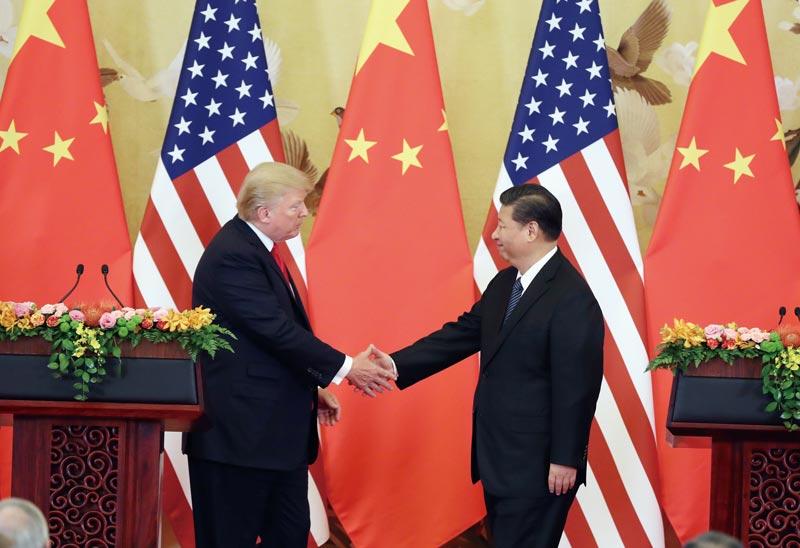
 Old Version
Old Version
